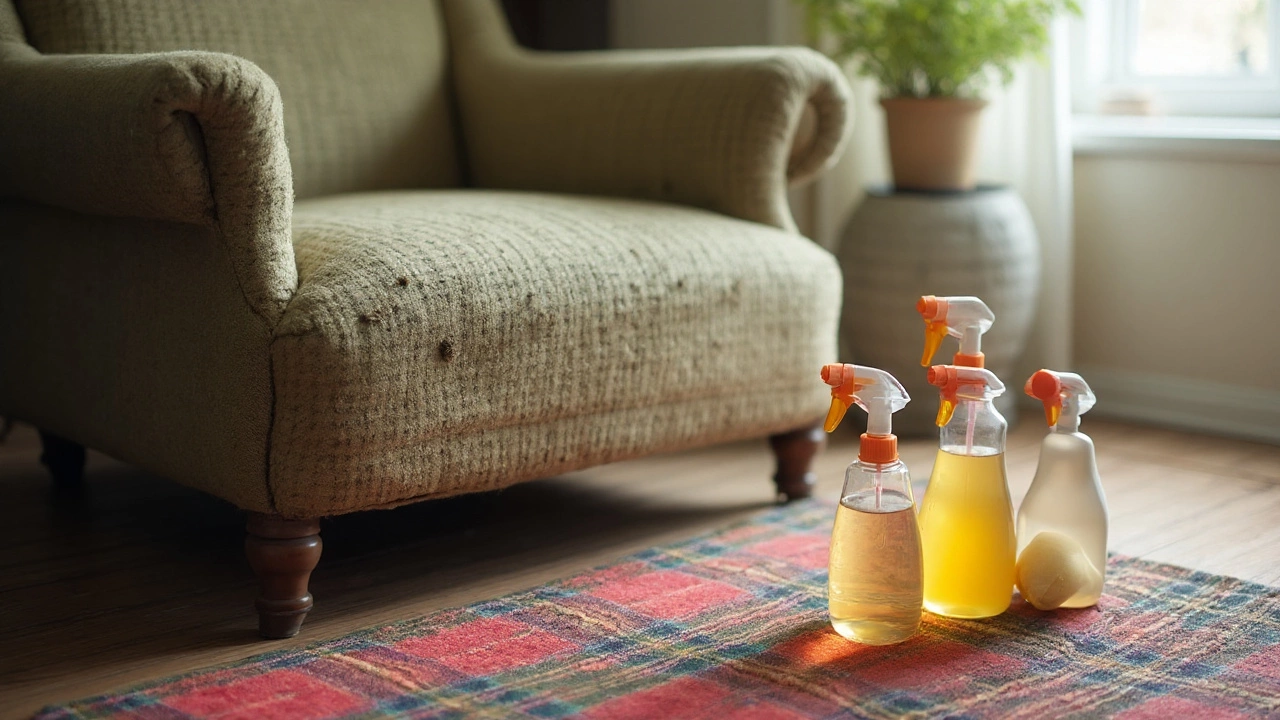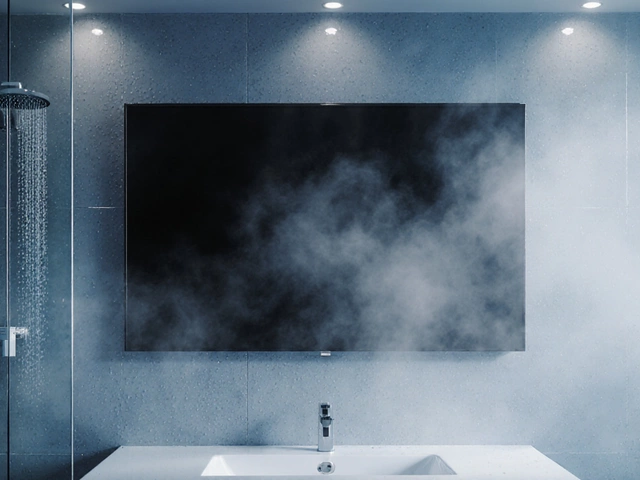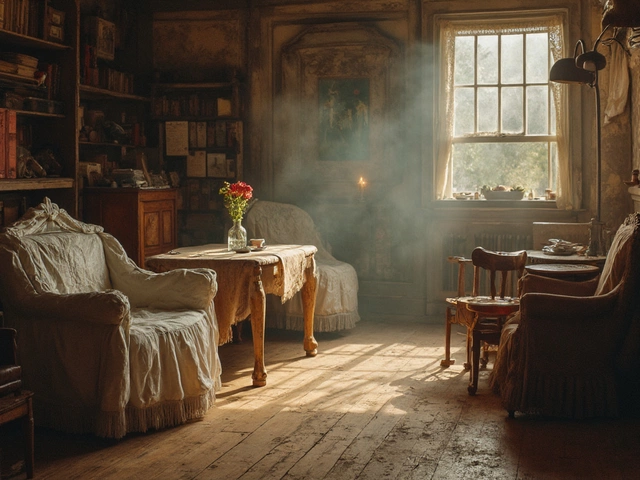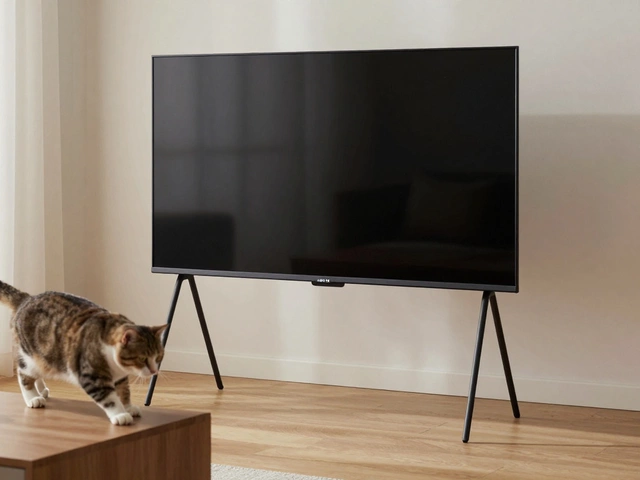Those unsightly patches of mold and mildew on your furniture aren’t just ugly—they can make your house smell like a forgotten cellar, send your allergies off the rails, and ruin your favourite pieces if you ignore them. Did you know the air inside homes, especially in cities like Leeds with rainy spells, can be two to five times more polluted than what’s outside? Mold and mildew play a big part in that. It’s not just about removing some fuzzy spots; it’s about making sure the whole family, kids included, isn’t breathing in air that’s bad for their health when they snuggle on the sofa. I remember flipping over a cushion to find Brielle’s hidden stash of crayons—and a nasty patch of what looked like green fur. Gross. So what really works to kill mold and mildew on furniture and stops them coming back?
Understanding Mold and Mildew: What’s Lurking in Your Furniture?
If you’ve ever thought your house smelled slightly ‘off’ even after a deep clean, you’re not alone. Mold and mildew find their way onto furniture when there’s a mix of warmth, moisture, and darkness—think a rainy summer, a humid corner, that old sofa near the window, or just spillages from a clumsy drink incident (thanks, kids). Let’s get something straight: mold and mildew aren’t just aesthetic nuisances. Mold consists of tiny fungal spores, and once they latch onto a porous surface like wood, upholstery, or padding, they thrive by feeding on whatever organic material they land on—basically anything from breadcrumbs to natural fabric fibers.
But here’s the wild bit: some studies from the World Health Organization show over 20% of homes across Europe have some type of mold lurking somewhere, most of it probably hidden behind or inside furniture. And if you’ve ever pulled out that armchair from the wall and caught a whiff of must, you’ve met mildew—a type of surface mold that loves to hang out where there’s not much airflow. Short-term, it stinks and looks bad. Long-term, it can cause respiratory problems, trigger allergies in kids and adults, and even break down the fabric or wood. No one wants to sit on a health hazard, right?
One reason furniture seems like a magnet for mold is how porous most stuff is. Sofas and chairs, especially those with foam stuffing or wooden frames, soak up anything they’re exposed to—spills, sweat, humidity. This creates those ideal moist conditions. And in rainy cities—like our own Leeds—keeping rooms bone-dry is a bit of a nightmare. Point is, you need something that does more than just wipe away the visible gunk. Unless you actually kill mold and mildew, you’re just fighting a losing battle.
Proven Mold and Mildew Killers: Which Ones Actually Work?
Here’s where things get interesting. People swear by a bunch of home remedies—some work, some don’t. It’s tempting to grab the bleach, but did you know bleach is no superhero when it comes to porous materials like furniture? It might make mold look like it’s gone, but it often just bleaches the stain while leaving the spores deep inside, ready to come back. So what actually does the trick?
- White vinegar: Regular white vinegar (undiluted) is a solid champion for non-porous and lightly porous surfaces. It kills most species of mold on contact. And it’s cheap—about 80p a bottle at any supermarket.
- Baking soda: This isn’t just good for the fridge. Mix it with water, spray and scrub—not only does it kill some mold types, but it sucks up smells, too.
- Hydrogen peroxide (3% solution): This is a real mold killer and safe for most materials, unlike bleach. Spray, let it fizz and bubble, then wipe clean. Just don’t use it on dark fabrics since it can fade colours.
- Tea tree oil: Sounds fancy, but a few drops in water makes a seriously powerful antifungal spray. Pricey, but only a little is needed and the leftovers make your home smell like a spa.
- Isopropyl alcohol (rubbing alcohol): This isn’t just for first aid boxes. It zaps mold dead and dries fast. Ideal for non-wood surfaces or cleaning electronics after a mold scare.
If you want to get super serious, there are commercial mold removers, but always check they’re labelled “fungicidal” and safe for home use. They often contain quaternary ammonium compounds—used in hospitals—which are extremely effective. However, don’t use just any cleaning spray labeled ‘anti-bacterial’ or ‘sanitising’. That usually won’t touch fungi or spores.
For anyone feeling confused about which works best where, here’s a quick data chart based on common home furniture and cleaning agents:
| Furniture Material | White Vinegar | Baking Soda | Hydrogen Peroxide | Tea Tree Oil | Isopropyl Alcohol |
|---|---|---|---|---|---|
| Wood (Sealed) | Good | Fair | Excellent | Good | Excellent |
| Wood (Unsealed) | Fair | Poor | Good | Good | Good |
| Upholstery (Synthetic) | Excellent | Excellent | Good* | Good | Good |
| Upholstery (Natural) | Good | Excellent | Fair* | Excellent | Good |
| Foam/Stuffing | Good | Good | Excellent | Fair | Good |
*Can fade dark fabrics.
The important thing is always to test any cleaning solution on a hidden part of the piece first—no one wants a clean but patchy armchair. And remember: always dry out the furniture thoroughly after cleaning. Mold loves a lingering damp patch more than you love your Sunday lie-in.

Step-by-Step Guide: How to Remove and Kill Mold and Mildew on Furniture
So how do you actually do it without making things worse (or ruining your furniture)? Here’s what works best—learned from several panicked cleaning sessions and a bit of research squeezed in between loads of laundry.
- Pick the right moment. You want low humidity if possible. Windows open is ideal. Don’t try scrubbing mold in a stuffy room or you’ll only spread spores round the house.
- Gear up. Wear gloves and if you can, a mask. Mold spores aren’t friendly to asthmatics or anyone with allergies. Even a scarf is better than nothing. Old clothes too—some stains just won’t wash out.
- Vacuum first. Use a HEPA-filter vacuum to remove as much dry mold/mildew as you can. Toss the bag or empty the dust collector outside immediately.
- Apply your chosen cleaner. For a standard sofa or chair, spray the area with undiluted vinegar, hydrogen peroxide, or your tea tree oil mix. Don’t soak it—it’s about dampening, not flooding. Wait at least 10–15 minutes to let it work.
- Scrub. Use a firm-bristle brush or old toothbrush for small, stubborn areas. Wipe away loosened mold with a disposable towel. If you see patches coming back, repeat the process.
- Rinse if needed. If using vinegar or baking soda, a rinse with a damp cloth can help keep the surface smooth. For wood, keep moisture down, dry immediately.
- Dry completely. This is essential. Point a fan at the spot, open the window, or set the piece outdoors on a dry, breezy day. Move cushions and covers so every part can air out.
- Finish with prevention. Spray a light mist of undiluted vinegar or diluted tea tree oil on the dry furniture—this can form an invisible shield for a while.
A few things to never try: Don’t use harsh chemicals meant for bathrooms (like pure bleach or drain cleaner); they can damage fabrics, wood, and your lungs. Don’t stuff wet or slightly musty furniture straight back into corners or rooms without ventilation. And don’t forget to address the reason mold grew there—high humidity or poor air flow. Otherwise, it’s only a matter of time before the fuzzy green comes back for round two.
How to Prevent Mold and Mildew From Coming Back
The annoying bit about mold and mildew is they’re sneaky—they lurk in places you miss when tidying. Once you know how to remove mold from your furniture, keeping it from returning is all about making life hard for those spores. Start with the basics: keep relative humidity in rooms below 60%. Dehumidifiers make a huge difference in British weather, and even a small one can clear out a surprising amount of water from the air.
Next up, airflow matters. Try not to cram furniture against cold, damp external walls. Move things out even just a few centimeters so air can move around the back and bottom. If you can, leave windows cracked open—even a tiny gap helps. For homes with double glazing and no vents, older houses especially, opening the windows for even ten minutes a day can bring your humidity down.
Regular cleaning makes a difference. Every few months, check under cushions, behind backs, and inside drawers for any sign of trouble. Smell is often your first clue—musty means moisture. Spritz high-risk areas with a vinegar or tea tree oil spray as a preventative every month. Even a few shots of Lysol can help, as long as the spray says “kills mold and mildew.”
If you’ve had a serious outbreak or just want to play it safe, silica gel packs (like those little packets you find in new shoes) are great hidden in sofa crevices and drawers. They suck up moisture like magic and are cheap online. And if you’re in the habit of drying washing on radiators, try to keep it away from upholstered furniture—mold loves that warm damp air.
For anyone with serious allergies or asthma, take a look at getting a HEPA air purifier, especially if you live in a city or get lots of rain and condensation on windows. Studies show that using a HEPA filter alongside regular cleaning can cut down airborne mold spores in the home by almost 80%. That’s nothing to sneeze at—literally.
Got leather or delicate antique furniture? Prevention is absolutely key. Treat those with special leather conditioners and always keep them out of constant direct sunlight to avoid weakening the material, making it more vulnerable to mildew. Remember to check underneath and behind pieces after particularly wet seasons, especially if your place isn’t the best insulated. Keep an old hair dryer handy—it works wonders for emergency drying missions.
Mold and mildew don’t mean you need to bin your favourite armchair or spend a fortune on professional cleaning. With the right approach and a bit of vigilance, most outbreaks are treatable—and preventable. And hey, if you catch it early, the ‘before and after’ could surprise you. My sofa’s survived juice spills, muddy shoes, and more than one stealthy patch of green, all without smelling like a science project. Be smarter than the mold—it’s your house, after all.



